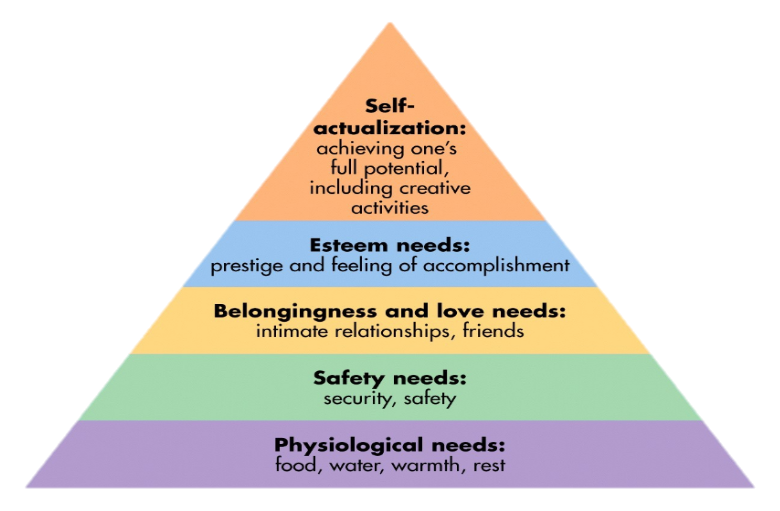Maslow and Employee Engagement
- Team @ Brown Bag App
- Jul 24, 2018
- 3 min read
I was fortunate to be able to attend Cornell University’s School of Industrial and Labor Relations, ILR for short. I believe that among other professions chosen by ILR graduates, it is one of the top schools for those who become HR professionals.
To those who attended the ILR School, we believed that ILR really meant, “I Love to Read”. And it seemed that we were always reading about Abraham Maslow and his 1943 paper and more fully in a 1954 book, Motivation and Personality about Maslow’s Hierarchy of Needs, which is illustrated in the chart below.

Maslow established a psychological theory of human motivation based on what he believed to be their needs. His theory stated that humans need to have their basic needs met first (physiological – food, water, sleep) and only then could they focus and be motivated on having additional needs met such as Safety needs (employment, family, health), Love/belonging (friendship, family), Esteem (confidence, respect, achievement) and the highest of all the needs – Self Actualization (morality, problem solving, acceptance of facts).
Maslow focused on high achievers and in his 1943 paper stated: “It is quite true that man lives by bread alone — when there is no bread. But what happens to man’s desires when there is plenty of bread and when his belly is chronically filled?” His theory was simple, by focusing on individuals who had their basic needs met Maslow thought that people sought out ever greater achievements.
That got me to thinking about the question for this post, Does Maslow’s theory, of 75 years ago, have relevance in the 21st Century workplace and how does it fit with our notion of Employee Engagement?
I found this amusing update to Maslow’s Hierarchy of Needs posted by Vala Ashfar on Twitter I think it really prioritizes the way many, especially millennials, feel is important in their life/work today.

How does Maslow’s Hierarchy relate to Employee Engagement?
Physiological Need (Survival) – Basic need. Disengaged - if your only here only for the pay check.
Safety – We need to know that our job is secure, which varies by the job market nowadays. Not Engaged - if I just do my job and I am not motivated to do more.
Belonging – People like to feel part of a team, something bigger. So a healthy employee engagement strategy would means that employees know their individual contributions are valued by the company. Almost Engaged - if your company is consistent in building teams and fostering a sense of belonging and “camaraderie”.
Esteem Needs – When the company and employees build a consistent practice where individuals feel like they’re important to a team, projects, and the overall organization. Engaged - where employees view themselves as being vested in the business.
Self-Actualization – Most people have some level of ambition and want to achieve or advance at work. Highly Engaged – employees happen when the company gives individuals the opportunities for growth, learning, leadership and advancement and allows them to begin to self-actualize within your company’s walls.
At Brown Bag we believe employee engagement is a continual and consistent process that comes from the simplest interactions such as a lunch, to events where employees are socially engaging with their peers and supervisors alike. The research substantiates that companies who have more engaged employees perform better in many key measures. The Brown Bag application makes it easy to engage employees in activities which increase their climb up the Maslow pyramid and to measure employee engagement.
For more information contact us at www.brownbagapp.com
By
Howard Schechter
C0-Founder and CRO
Brown Bag

Comments